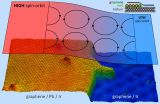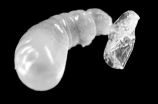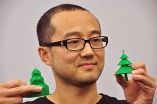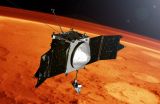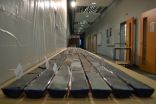(Press-News.org) WASHINGTON (Dec. 15, 2014)--Over prescription of antibiotics is a major factor driving one of the biggest public health concerns today: antibiotic resistance. In a first-of-its-kind study, research led by the George Washington University suggests that public health educational materials may not address the misconceptions that shape why patients expect antibiotics, driving doctors to prescribe them more. The research appeared in October in the journal Medical Decision Making.
Researchers from George Washington, Cornell and Johns Hopkins universities surveyed 113 patients in an urban hospital to test their understanding of antibiotics. They discovered a widespread misconception: patients may want antibiotics, even if they know that, if they have a viral infection, the drugs will not make them better. These patients believe that taking the medication will not worsen their condition--and that the risk of taking unnecessary antibiotics does not outweigh the possibility that they may help.
"Patients figure that taking antibiotics can't hurt, and just might make them improve. When they come in for treatment, they are usually feeling pretty bad and looking for anything that will make them feel better. These patients might know that there is, in theory, a risk of side effects when taking antibiotics, but they interpret that risk as essentially nil," said David Broniatowski, assistant professor in GW's School of Engineering and Applied Science.
Contrary to these patients' beliefs, there are risks associated with taking unnecessary antibiotics, such as secondary infections and allergic reactions.
"More than half of the patients we surveyed already knew that antibiotics don't work against viruses, but they still agreed with taking antibiotics just in case," Dr. Broniatowski said. "We need to fight fire with fire. If patients think that antibiotics can't hurt, we can't just focus on telling them that they probably have a virus. We need to let them know that antibiotics can have some pretty bad side effects, and that they will definitely not help cure a viral infection."
Dr. Broniatowski's research found that most educational tools used to communicate the dangers of taking unnecessary antibiotics focus on the differences between bacteria and viruses--the idea that "germs are germs"--but do not address patients' widespread "why not take a risk" belief.
While the study--Germs Are Germs, and Why Not Take a Risk? Patients' Expectations for Prescribing Antibiotics In an Inner-City Emergency Department--was small, the results signal the need for a shift in the way health care officials educate patients and caretakers. Dr. Broniatowski urges members of the public health community to reconsider their communication tactics and adjust educational materials to address patients' concerns and beliefs.
In the future, Mr. Broniatowski and his team, which included Eili Klein at Johns Hopkins and Valerie Reyna at Cornell, hope to test these communication strategies in a clinical setting and, ultimately, reduce the rate of over prescription.
INFORMATION:
School of Engineering and Applied Science
GW's School of Engineering and Applied Science prepares engineers and computer scientists to address society's technological challenges by offering outstanding undergraduate, graduate and professional educational programs, and by providing innovative, fundamental and applied research activities. The school has six academic departments, 11 research centers, 90 faculty and more than 2,500 undergraduate and graduate students. Core areas of excellence include biomedical engineering, cybersecurity, high performance computing and simulation of engineering systems, nanotechnologies, robotics and systems engineering.
Researchers in Spain have discovered that if lead atoms are intercalated on a graphene sheet, a powerful magnetic field is generated by the interaction of the electrons' spin with their orbital movement. This property could have implications in spintronics, an emerging technology promoted by the European Union to create advanced computational systems.
Graphene is considered the material of the future due to its extraordinary optical and electronic mechanical properties, especially because it conducts electrons very quickly. However, it does not have magnetic properties, ...
To the casual observer, the colonies of social insects like bees and ants appear to be harmonious societies where individuals work together for the common good. But appearances can be deceiving.
In fact, individuals within nests compete over crucial determinants of fitness such as reproductive dominance and production of male eggs. The intensity of competition often depends on the level of kinship between colony members. This is because selfish individuals lose indirect fitness when their behavior harms close relatives. A new study by Eva Schultner and colleagues from ...
Just in time for Christmas, Simon Fraser University computing science professor Richard Zhang reveals how to print a 3D Christmas tree efficiently and with zero material waste, using the world's first algorithm for automatically decomposing a 3D object into what are called pyramidal parts.
A pyramidal part has a flat base with the remainder of the shape forming upwards over the base with no overhangs, much like a pyramid. A pyramidal shape is optimal for 3D printing because it incurs no material waste and saves print time.
The algorithm promises to become a big deal in ...
DALLAS - Dec. 15, 2014 - UT Southwestern Medical Center researchers have identified a possible therapy to treat neurofibromatosis type 1 or NF1, a childhood neurological disease characterized by learning deficits and autism that is caused by inherited mutations in the gene encoding a protein called neurofibromin.
Researchers initially determined that loss of neurofibromin in mice affects the development of the part of the brain called the cerebellum, which is responsible for balance, speech, memory, and learning.
The research team, led by Dr. Luis F. Parada, Chairman ...
Irvine, Calif., Dec. 15, 2014 - Dangerously high levels of air pollutants are being released in Mecca during the hajj, the annual holy pilgrimage in which millions of Muslims on foot and in vehicles converge on the Saudi Arabian city, according to findings reported today at the American Geophysical Union meeting in San Francisco.
"Hajj is like nothing else on the planet. You have 3 to 4 million people - a whole good-sized city - coming into an already existing city," said Isobel Simpson, a UC Irvine research chemist in the Nobel Prize-winning Rowland-Blake atmospheric ...
Early discoveries by NASA's newest Mars orbiter are starting to reveal key features about the loss of the planet's atmosphere to space over time.
The findings are among the first returns from NASA's Mars Atmosphere and Volatile Evolution (MAVEN) mission, which entered its science phase on Nov. 16. The observations reveal a new process by which the solar wind can penetrate deep into a planetary atmosphere. They include the first comprehensive measurements of the composition of Mars' upper atmosphere and electrically charged ionosphere. The results also offer an unprecedented ...
A breast cancer specialist and clinical researcher at Women & Infants Hospital of Rhode Island presented research yesterday at the 2014 San Antonio Breast Cancer Symposium showing that adding either the chemotherapy drug carboplatin or the blood vessel-targeting drug bevacizumab to the standard treatment of chemotherapy before surgery helped women who have the basal-like subtype of triple-negative breast cancer.
"We found that adding either carboplatin or bevacizumab to standard preoperative chemotherapy increased pathologic complete response rates for women with basal-like ...
Scientists from the Department of Energy's Pacific Northwest National Laboratory will present a variety of research at the 2014 American Geophysical Union Fall Meeting, which runs Monday, Dec. 15 through Friday, Dec. 19 at the Moscone Convention Center in San Francisco. Noteworthy PNNL research presentations include the following topics:
Even with global warming cold air outbreaks will remain
Just because the climate is warming doesn't mean Cold Air Outbreaks are going away, especially in Southwestern Canada and Northwestern United States. Overall, global climate models ...
Leading conservation scientists from around the world have called for a substantial role for nuclear power in future energy-generating scenarios in order to mitigate climate change and protect biodiversity.
In an open letter to environmentalists with more than 60 signatories, the scientists ask the environmental community to "weigh up the pros and cons of different energy sources using objective evidence and pragmatic trade-offs, rather than simply relying on idealistic perceptions of what is 'green' ".
Organized by ecologists Professor Barry Brook and Professor Corey ...
SALT LAKE CITY, Dec. 15, 2014 - The rate at which carbon emissions warmed Earth's climate almost 56 million years ago resembles modern, human-caused global warming much more than previously believed, but involved two pulses of carbon to the atmosphere, University of Utah researchers and their colleagues found.
The findings mean the so-called Paleocene-Eocene thermal maximum, or PETM, can provide clues to the future of modern climate change. The good news: Earth and most species survived. The bad news: It took millennia to recover from the episode, when temperatures rose ...
